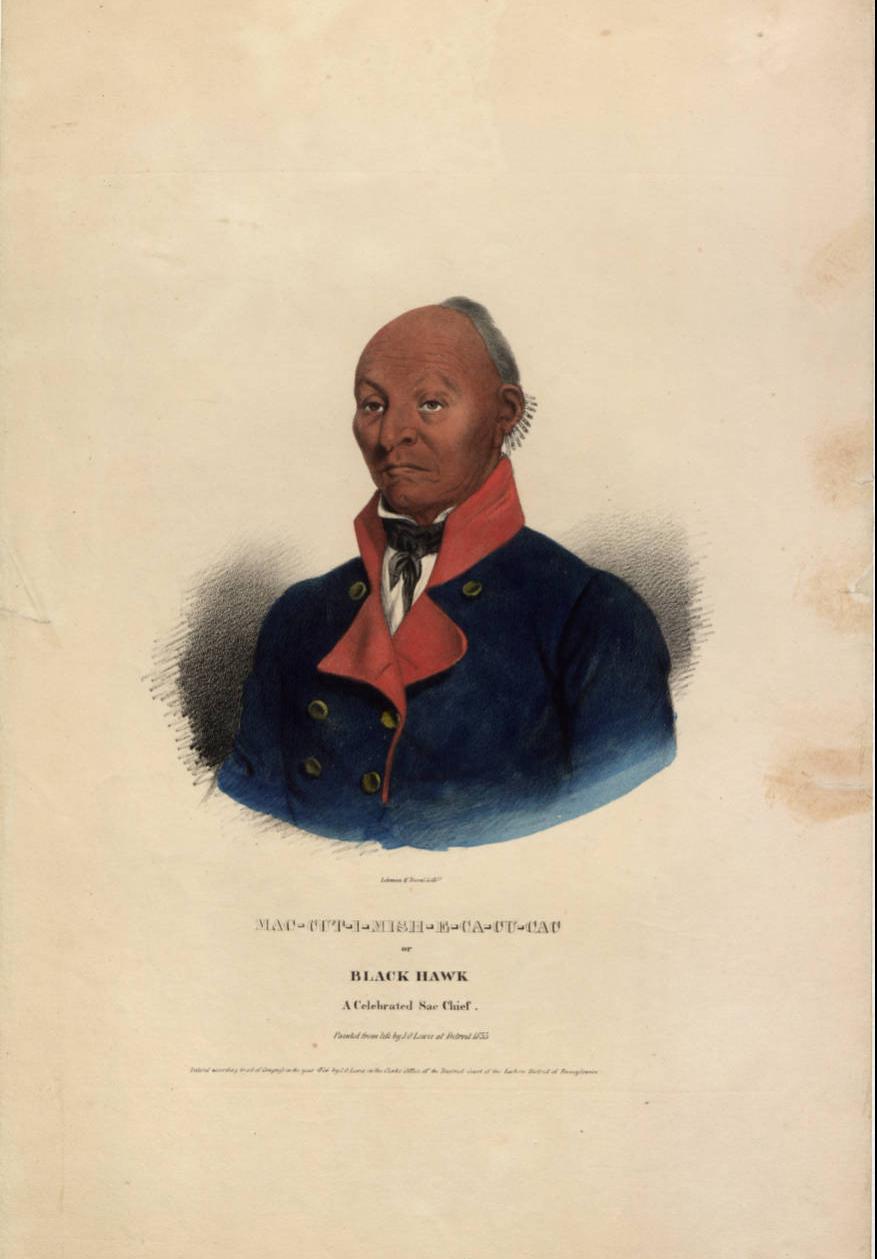Black Hawk, chief of the Sac Indians, called Ma-ka-tai-she-kia-kiak by his people, rejected the legitimacy of the Treaty of St. Louis, which he had signed in 1804, that ceded all Sac and Fox (Mesquakie) territory east of the Mississippi River to the United States. For over 10 years, Black Hawk maintained that the treaty was invalid. He insisted that what had been written down was different from what had been spoken at the treaty conference, claiming that “whites were in the habit of saying one thing to the Indians and putting another thing down on paper.”

Although he finally confirmed in 1816 that he had signed the treaty, Black Hawk grew increasingly angry as the U.S. Army built forts in the area and white settlers moved into the region. In April 1832, he crossed the Mississippi River from Iowa Indian Territory with Sacs, Meskawis, and Kickapoos, intending to recapture the territory he had lost, triggering the conflict.
General Henry Atkinson commanded a sizeable force of U.S. Army, part-time U.S. soldiers, and Illinois militia to drive Black Hawk and his “British Band,” as it came to be known to the westside of the Mississippi. units throughout Illinois, Indiana, and surrounding territories mustered and prepared to defend their respective regions. Alexander W. Russell commanded the 40th Regiment, Indiana State Militia, organized on June 14, 1826, at the time of Black Hawk’s uprising. On June 3, 1832, McFarland was ordered to assemble an element of his regiment at the military grounds () to prepare for a march into the northern part of the state.
One hundred and fifty men assembled for the expedition, equipped with rifles, tomahawks, a pound of powder, and an ample supply of lead balls. The entire campaign consisted of marching and maneuvering. During its time of service, the force marched to the Lake Michigan area and back again. The only incident occurred when a cannon fired prematurely, causing a militiaman named William Warren to lose both of his arms. A few weeks after leaving the city, the volunteers returned and were disbanded.
During the conflict, which lasted until August 2, 1832, when Black Hawk surrendered, U.S. soldiers killed between 442 and 592 of Black Hawk’s men, almost annihilating Native American forces, which had been depleted by hunger, disease, and desertion. Only about 70 U.S. settlers and soldiers who actively engaged in the conflict lost their lives.
FURTHER READING
- Northern Illinois University. “The Black Hawk War Phases.” https://digital.lib.niu.edu/illinois/lincoln/topics/blackhawk/phases.
CITE THIS ENTRY
APA:
Sanford, W. L. (2021). Black Hawk War. Encyclopedia of Indianapolis. Retrieved Jan 6, 2026, from https://indyencyclopedia.org/black-hawk-war/.
MLA:
Sanford, Wayne L. “Black Hawk War.” Encyclopedia of Indianapolis, 2021, https://indyencyclopedia.org/black-hawk-war/. Accessed 6 Jan 2026.
Chicago:
Sanford, Wayne L. “Black Hawk War.” Encyclopedia of Indianapolis, 2021. Accessed Jan 6, 2026. https://indyencyclopedia.org/black-hawk-war/.

Help improve this entry
Contribute information, offer corrections, suggest images.
You can also recommend new entries related to this topic.